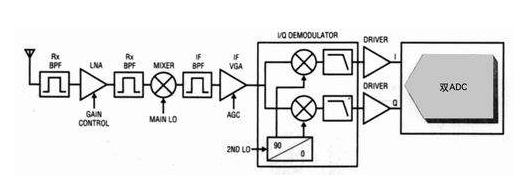Reads modulation, demodulation, and frequency conversion
There are three methods of modulation: amplitude modulation, frequency modulation, and phase modulation.
The common method of using the FM method is: FM FM radio (of course, there is a transmitter), and the audio part of the TV is also used FM (image part is to use AM)
Signal frequency modulation:
A low frequency or audio should be carried on the radio and launched. The methods are amplitude modulation, frequency modulation, and phase modulation. FM is to modulate the high frequency with a low frequency, so that its signal contains low frequency components, so that it emits with low frequency components.

In radio communication and broadcasting, it is necessary to transmit electric signals converted from languages, music, characters, images, and the like. Because these signals are relatively low frequency, according to electromagnetic theory, low-frequency signals can not be directly transmitted from the antenna in the form of electromagnetic waves. Therefore, at the sending end, a low-frequency signal must be applied to the high-frequency signal in a modulated manner. Then the high-frequency signal with a low-frequency signal is transmitted, and at the receiving end, the high frequency signal with such a low frequency signal is transmitted. After the frequency signal is received, the original low-frequency signal is “detected†by frequency conversion and corresponding demodulation methods, thereby achieving the purpose of communication and broadcasting.
To add the low-frequency signal to the high-frequency oscillation, the low-frequency signal can be used to control a certain parameter (amplitude, frequency, or phase) of high-frequency constant-amplitude oscillation. This process of controlling high-frequency oscillations with low-frequency signals to make them have the characteristics of low-frequency signals is called modulation. The low-frequency signal is called a modulation signal or a modulation wave, and the controlled high-frequency constant amplitude oscillation is called a modulated signal or a carrier wave. The modulated high-frequency signal is called modulated wave. According to the different parameters of the high frequency signal controlled by the low frequency signal, there are different modulation methods. The modulation signal is used to control the amplitude of the carrier wave, so that the amplitude of the carrier wave changes according to the regularity of the modulation signal. This modulation is called amplitude modulation and is referred to as amplitude modulation. The modulation signal is used to control the carrier frequency, and the frequency of the carrier wave is changed according to the modulation signal. The frequency modulation, referred to as frequency modulation, is the same, and the phase of the carrier wave is changed according to the regularity of the modulation signal.
The above-mentioned amplitude modulation, frequency modulation, and phase modulation are continuous modulations. In addition, there are pulse modulations and so-called pulse code modulations developed in modern digital communications. However, the earliest use and wider application is amplitude modulation. Although this method has low efficiency and poor anti-jamming performance, it occupies a narrow frequency band and has a simple circuit. Therefore, the medium- and short-wave broadcasting is still widely used today.
Modulation not only enables efficient transmission of low-frequency signals, but also enables different radios to have different carrier frequencies, thereby allowing each station to distinguish from each other.
Portable energy storage power Stastion
SHENZHEN CHONDEKUAI TECHNOLOGY CO.LTD , http://www.siheyidz.com